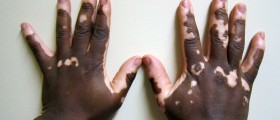
Introduction
Fungal skin infections are infections caused by fungi andthey affect various portions of the skin. In most cases, they can be treatedrather effectively. Fungi tend to live off keratin which is an importantprotein that makes up the nails, hair and skin. There are various differenttypes of fungal skin infections and they can be easily divided into groupsdepending on the type of organism involved.
Types of fungal skin infections
Yeast infections are a group of fungal infections which canbe divided further into intertrigo, pityriasis versicolor and thrush. Intertrigois triggered by Candida albicans and it affects the groin, armpits and all theareas where skin touches skin, and the areas which are moist and warm. It ischaracterized by scales, spots, soreness and itchiness. Pityriasis versicoloris characterized by dark patches on the skin. Thrush is known for causingtroubles if a person uses antibiotics, is pregnant or suffers from poorlycontrolled diabetes. In other cases thrush lives in harmony with the humanbody. Thrush is characterized by small white patches which leave a red mark ifthey get rubbed off, and it commonly affects the tongue, mouth, vagina and allareas lined with mucous membranes. Ringworm of the scalp or tinea capitis isanother fungal infection which is characterized by inflammatory conditions andhair loss. Ringworm of the body or tinea corporis commonly affects the limbs orthe abdomen and is characterized by patches and rings which are red in color.Ringworm of the groin or tinea cruris, which is also sometimes referred to asjock itch commonly affects athletes. There are also various nail infectionswhich may occur and one of the most common ones is ringworm of the nails ortinea unguium. Another common medical condition affiliated with fungal skininfections is athlete’s foot. It is characterized by redness, dryness,itchiness and scaling of the skin and it usually occurs between the toes. Allthe aforementioned types of skin infections are also referred to asdermatophyte infections.
Causes of fungal skin infections
Moisture of the skin encourages fungal infections. Damaged skinsurface also increases the risk of various fungal infections. Other riskfactors include weakened immune system, obesity, diabetes, steroids and variousdifferent forms of antibiotics.
Treatment of fungal skin infections
Most treatments are usually applied topically to theaffected areas. They come in various forms such as medicated powders, lotionsand creams.

















Your thoughts on this
Loading...